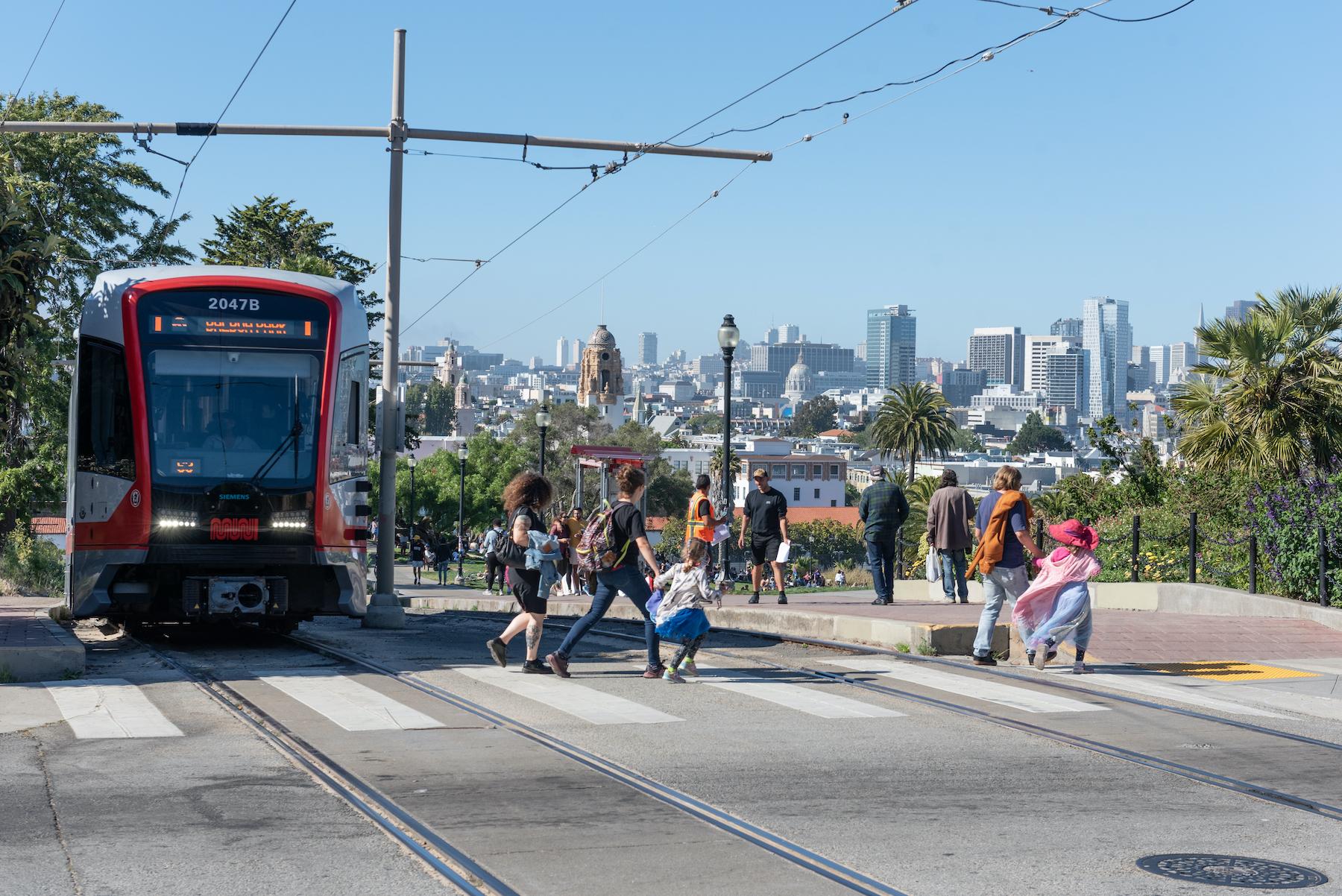
A BALLOT measure in this November’s elections in Santa Clara County will continue the vital work done by the Santa Clara Valley Open Space Authority (SCVOSA) to protect open space and agricultural land, maintain parks, trails and other open spaces, protect land and rivers around creeks and continue with its Urban Grants program.
These were discussed, along with the importance of public parks and open spaces to public health amid the COVID-19 pandemic, in an online media briefing hosted by Ethnic Media Services last Thursday, October 11.
Speakers at the briefing included Shay Franco-Clausen of the Santa Clara Valley Open Space Authority, Assemblymember Ash Kalra (27th Assembly District), Councilmember Sergio Jimenez (District 2, San Jose) and Sadiya Muqueeth (The Trust for Public Land).
Measure T will continue the existing parcel tax of $24 per parcel for property within the jurisdiction of the Santa Clara Valley Open Space Authority which was approved in 2014 via Measure Q. The parcel tax in Measure Q expires in 2029; Measure T would remove that sunset date and continue the parcel tax until voters decide to change or repeal it. SCVOSA, which has an annual budget of $12 million, estimates that the parcel tax will raise an approximate $8 million annually, or two-thirds of its budget, which it can commit to its projects.
A native of San Jose, Franco-Clausen revealed that the Open Space Authority has protected over 26,000 acres of open space land in Santa Clara Valley, operates three preserves that are open to the public 365 days a year free of charge for a variety of activities (walking, biking, bird-watching, hiking), protects farmlands that are importance food sources and provides environmental educational programs within its jurisdiction which covers Milpitas, San Jose, Santa Clara, Campbell, Morgan Hill and Unincorporated Santa Clara County.
The Open Space Authority has completed over 300 projects since the passage of Measure Q in 2014, some of which were coursed through community groups in urban areas, she added.
While their programs have allowed them to protect natural habits for local wildlife, as well as help protect groundwater sources in the area and assist in controlling flooding during heavy storm events, Franco-Clausen stressed the importance of having been able to manage keeping the preserves open and space for peoples’ use during the COVID-19 pandemic.
“We’ve noticed a greater diversity of visitors,” she noted, “with many considering open space to be essential during these times for health reasons, mental health, and it really is a key part of keeping our sanity during these times.”
Franco-Clausen noted that through the work of agencies like the Open Space Authority and through ballot measures like Measure Q and now Measure T, she has enjoyed the natural beauty and open spaces that Santa Clara Valley has had to offer from her childhood to the present, and that it is an activity that she has passed on to her children and is enjoyed by the diverse communities in the valley and visitors that come to the area.
Assemblymember Ash Kalra, who has sponsored pieces of legislation to project land and wildlife and who opposed the development of Coyote Valley when he ran for the San Jose City Council, echoed Franco-Clausen’s observations on the importance of public spaces for mental health.
“We need open spaces for our own personal health, for our family’s health,” Assemblymember Kalra said, noting that it is especially true during this pandemic and this season’s exacerbated wildfires.
The UC Santa Barbara-educated legislator lauded the partnership among the state, the city and the agency that has been beneficial to area residents.
Assemblymember Kalra also cited AB 948, the Coyote Valley Conservation Program, which he was able to work on with the cooperation of the SCVOSA and the City of San Jose that recognized Coyote Valley “as an incredible valuable resource, a natural resource that we need to protect for generations to come.”
Assemblymember Kalra emphasized that the benefits and work done through the passage of Measure Q, including the ability to give resources to the SCVOSA to buy up land, will continue with the passage of Measure T in November.
“At the end of the day the land will not be protected unless it is bought. That’s the only way you can protect it,” Assemblymember Kalra said, citing the fact that a different city council make-up or different economic needs may impact plans on lands that need protection. “That’s why it is critical that we not only have to have things like legislation to create a conservation program… we need the Open Space Authority to have the ability and resources to actually purchase and protect land permanently.”
Assemblymember Kalra told briefing participants that he is confident that Measure T will get the community’s support, especially during these times when the only respite people get are a walk outside or to go these open spaces so people understand the value of these spaces.
Councilmember Jimenez, for his part, cited the many projects made possible through Measure Q, which will be continued with the passage of Measure T. These include Martial Cottle Park, Albertson Parkway Trail and Bill’s Backyward, among countless others, whose funding came from the Open Space Authority’s budget.
That is not counting the many small grants that the SCVOSA has given out to groups “that are striving to provide accessibility to nature,” he added.
The San Jose District 2 councilmember said that he has not been disappointed with the way that the funds collected through Measure Q have been spent and allocated, and believes that it will continue to be that way with Measure T.
Councilmember Jimenez also shared that, along with Measure T, there is a need to bring people into the fold of environmentalism, referring to concerned citizens who may not have access to national or public parks and open spaces, but who see the importance of protecting such spaces.
“That’s why the work done on Measure Q, and now that’s going to be done I believe through Measure T is so important to bring people into the fold and include them in some of these decisions and better understanding of how preserving our open space and opening channels to loving open spaces for our communities,” he said.
Muqueeth in her short talk said that nature, in this case public parks and open spaces, is an essential part of the public health infrastructure and that spending as little as 2 hours a week, or 15 to 20 minutes a day, in nature or green spaces improves self-reported health and well-being.
People living near open spaces and nature who are physically active experience less chronic diseases like hypertension or obesity and physical activity for older adults is linked to the delay of cognitive decline, said Muqueeth.
In terms of the world we live in right now, Muqueeth said the ability to go outside has an impact on psychological health.
“Being outside for a significant period of time during this lockdown phase was the last bastion of socialization, and we as human beings are social creatures,” Muqueeth explained. “We were struggling with a growing epidemic of loneliness and social isolation before the pandemic hit, and it became even more important as we were able to physically distance outside while still being in a safe environment.”
According to the SCVOSA’s Kat Wilson, Measure T has wide support in the community, with only one anti-tax group opposed to the measure. Breathe California was just the most recent organization to give its support for Measure T, added Marc Landgraf of the SCVOSA.
Landgraf told participants during the Q&A that the agency provides over $3 million to community organizations, schools, cities and the County to provide connections to nature for communities in urban areas where especially socioeconomically challenged communities have a harder time accessing the outlying preserves.
Landgraf also said that the SCVOSA takes its work seriously with regard to management of lands.
“Management of lands is a ‘forever’ responsibility – to the Earth and to its constituents – that the Open Space Authority takes very seriously. It includes removing trash when people dump their waste products on them, it means clearing vegetation on an ongoing basis from lands where there is greatest fire risk, in some places working with cattle grazers to mimic the conservation benefit that large elk herds used to perform to reduce vegetation loads and allow native plants to thrive, and very importantly, to be there for the public at our open preserves where the Authority manages over 20 miles of trails that are open free of charge every day of the year,” he clarified.
For more on Measure T and other measures in the Santa Clara County ballot, visit https://www.sccgov.org/sites/rov/Info/Nov2020/Documents/List%20of%20Local%20Measures.pdf. (Joseph L. Peralta/AJPress)






